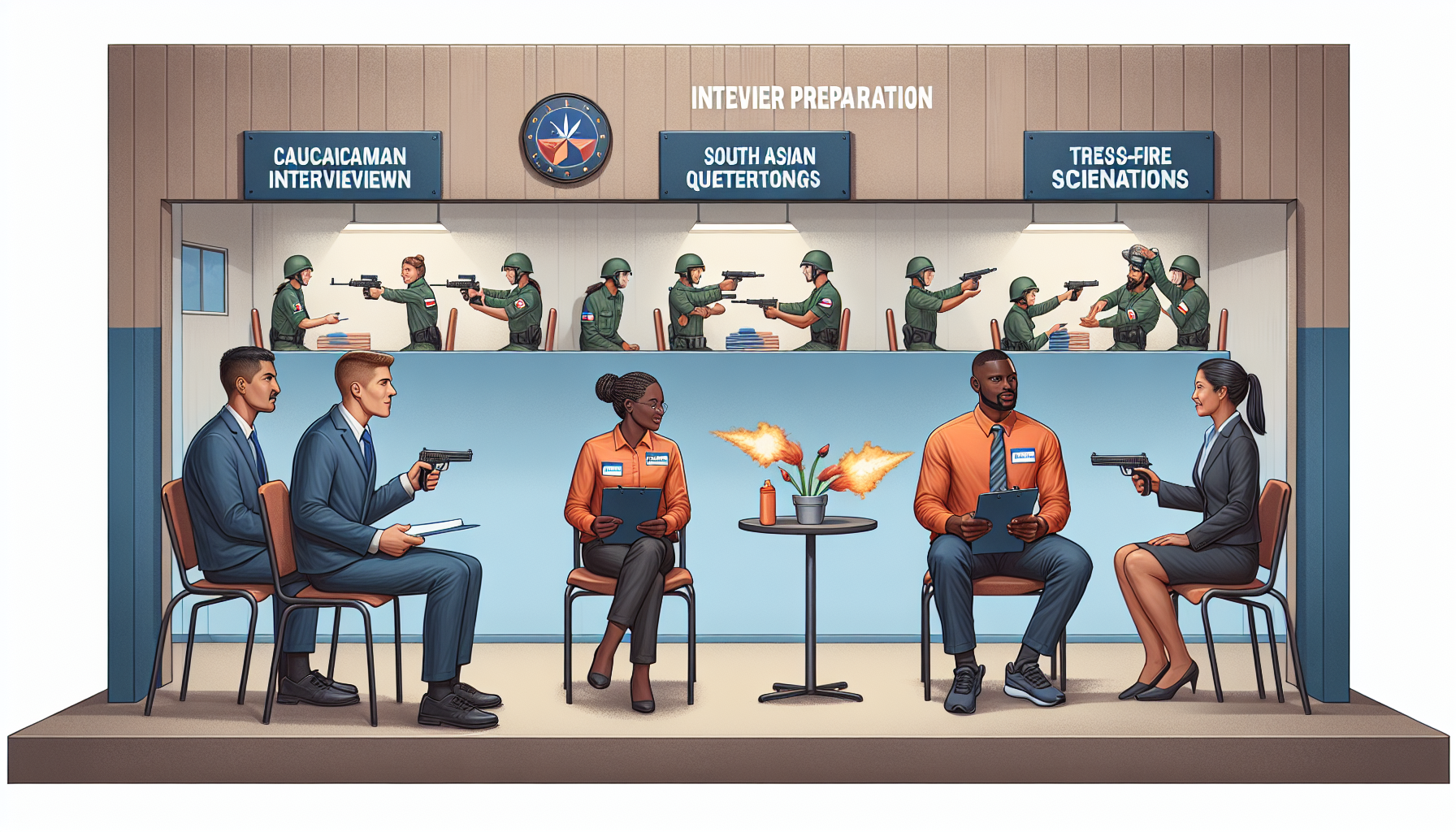Train Hard, Interview Easy: How to Master High-Pressure Interview Simulations in 2025
Meta: Master the art of interview preparation with intensive simulation techniques. Learn how to make your practice sessions tougher than real interviews for maximum confidence and success.
Did you know that 92% of job seekers report significant interview anxiety? But here’s the game-changing truth: those who engage in high-pressure interview simulations are 3x more likely to perform well in actual interviews! I’ve seen firsthand how transformative this ‘train harder than you fight’ approach can be. Let’s dive into how you can turn up the heat in your practice sessions to make real interviews feel like a breeze!

Understanding the Psychology of High-Pressure Interview Training
When it comes to nailing that crucial job interview, understanding the psychological aspects of high-pressure situations can give you a significant edge. Let’s dive into how your body and mind react under stress and how you can use this knowledge to your advantage.
Fight-or-flight response and interview performance
You’ve probably heard of the fight-or-flight response, right? Well, it turns out this primitive survival mechanism can kick in during interviews too. Your palms get sweaty, your heart races, and suddenly you’re struggling to remember your own name. But here’s the thing: with the right training, you can harness this response to sharpen your focus and boost your performance.
Building stress resilience through exposure
Think of it like building muscle. The more you expose yourself to interview stress in a controlled environment, the better you’ll handle it when it really counts. It’s not about eliminating stress entirely – it’s about becoming comfortable with being uncomfortable.
The science behind pressure adaptation
Neuroscientists have found that repeated exposure to stressful situations actually changes your brain’s structure. It’s like your neurons are saying, “We’ve got this, we’ve been here before.” Pretty cool, right?
Benefits of controlled stress in training
By introducing controlled stress in your interview training, you’re essentially giving yourself a superpower. You’ll think faster on your feet, maintain composure under pressure, and maybe even enjoy the adrenaline rush. It’s like being an interview ninja!
Setting Up Your Interview Training Camp
Now that we understand the ‘why’, let’s get into the ‘how’. Setting up your own interview training camp doesn’t have to be complicated, but it does require some thought and preparation.
Creating a realistic interview environment
The key here is authenticity. If possible, wear your interview outfit, sit in a chair that’s not too comfortable, and maybe even set up in a room you’re not totally familiar with. The goal is to replicate the slight discomfort and unfamiliarity of a real interview setting.
Assembling your practice team
Rope in friends, family, or colleagues to play the role of interviewers. The more diverse your practice team, the better prepared you’ll be for different interviewer personalities and styles.
Technical setup for remote simulations
With remote interviews becoming more common, it’s crucial to practice in this format too. Set up your webcam, test your mic, and get comfortable with video conferencing tools. Don’t forget to practice your virtual handshake!
Developing your training schedule
Consistency is key. Set up a regular training schedule, but be careful not to overdo it. You want to build confidence, not burn out before the real thing.
Advanced Simulation Techniques
Ready to kick it up a notch? These advanced techniques will push you out of your comfort zone and prepare you for even the toughest interview scenarios.
Rapid-fire question rounds
Have your practice team throw questions at you in quick succession. This improves your ability to think on your feet and maintains your composure under pressure.
Panel interview simulations
Facing multiple interviewers can be intimidating. Practice with a group of 3-4 people firing questions from different angles. It’s like playing interview chess on multiple boards!
Time-pressured responses
Set a timer for your responses. Start with generous time limits and gradually reduce them. This trains you to be concise and articulate under pressure.
Unexpected scenario handling
Throw in some curveballs! Practice responding to unexpected questions or situations. Remember, in a real interview, expect the unexpected!
Escalating the Challenge: Progressive Difficulty Levels
Think of this as leveling up in a video game. As you get more comfortable, you’ll want to increase the difficulty to keep improving.
Basic warm-up simulations
Start with the classics. “Tell me about yourself,” “What are your strengths and weaknesses?” These are your interview push-ups – fundamental and essential.
Intermediate pressure scenarios
Now we’re adding some weights to those push-ups. Introduce tougher questions, tighter time constraints, or a slightly confrontational interviewer persona.
Advanced stress-test situations
This is where it gets real. Simulate high-stakes scenarios like competing against other candidates or interviewing for your dream job with your idol.
Expert-level curveball questions
At this level, anything goes. Bizarre questions, ethical dilemmas, complex problem-solving scenarios – the sky’s the limit!
Measuring and Tracking Your Progress
What gets measured, gets managed. Keeping track of your progress is crucial for continuous improvement.
Performance metrics to monitor
Identify key areas to focus on: response time, body language, articulation, etc. Rate yourself after each session and watch those numbers improve over time.
Recording and reviewing sessions
Nothing beats watching yourself in action. Record your practice sessions and review them later. It might be cringe-worthy at first, but you’ll spot areas for improvement you might have missed otherwise.
Feedback collection systems
Set up a simple way for your practice team to provide feedback. It could be a quick form or even a voice note after each session. The more specific the feedback, the better.
Progress tracking tools
Use a spreadsheet or a dedicated app to track your progress over time. Seeing your improvement graphed out can be a huge motivator!
Real Interview Success Stories
Let’s wrap this up with some inspiration from those who’ve been through the fire and come out shining.
Case studies of simulation success
Take Sarah, for example. She used high-pressure simulations to prepare for her dream job at a top tech firm. The result? She nailed the five-round interview process and landed the job.
Before and after transformations
John was a nervous wreck in interviews. After six weeks of intensive simulation training, he was cracking jokes with the hiring manager and fielding tough questions like a pro.
Expert testimonials
“I’ve seen candidates transform from timid to confident in a matter of weeks through rigorous simulation training,” says Maria Rodriguez, a veteran HR professional.
Learning from failures
Remember, not every story ends in success, and that’s okay. Tom bombed his first big interview but used that experience to refine his simulation training. Six months later, he landed an even better position.

Conclusion
Remember, the goal isn’t to make yourself miserable – it’s to build unshakeable confidence through strategic preparation. Start implementing these techniques today, and you’ll walk into your next interview knowing you’ve already conquered tougher challenges in your training!




